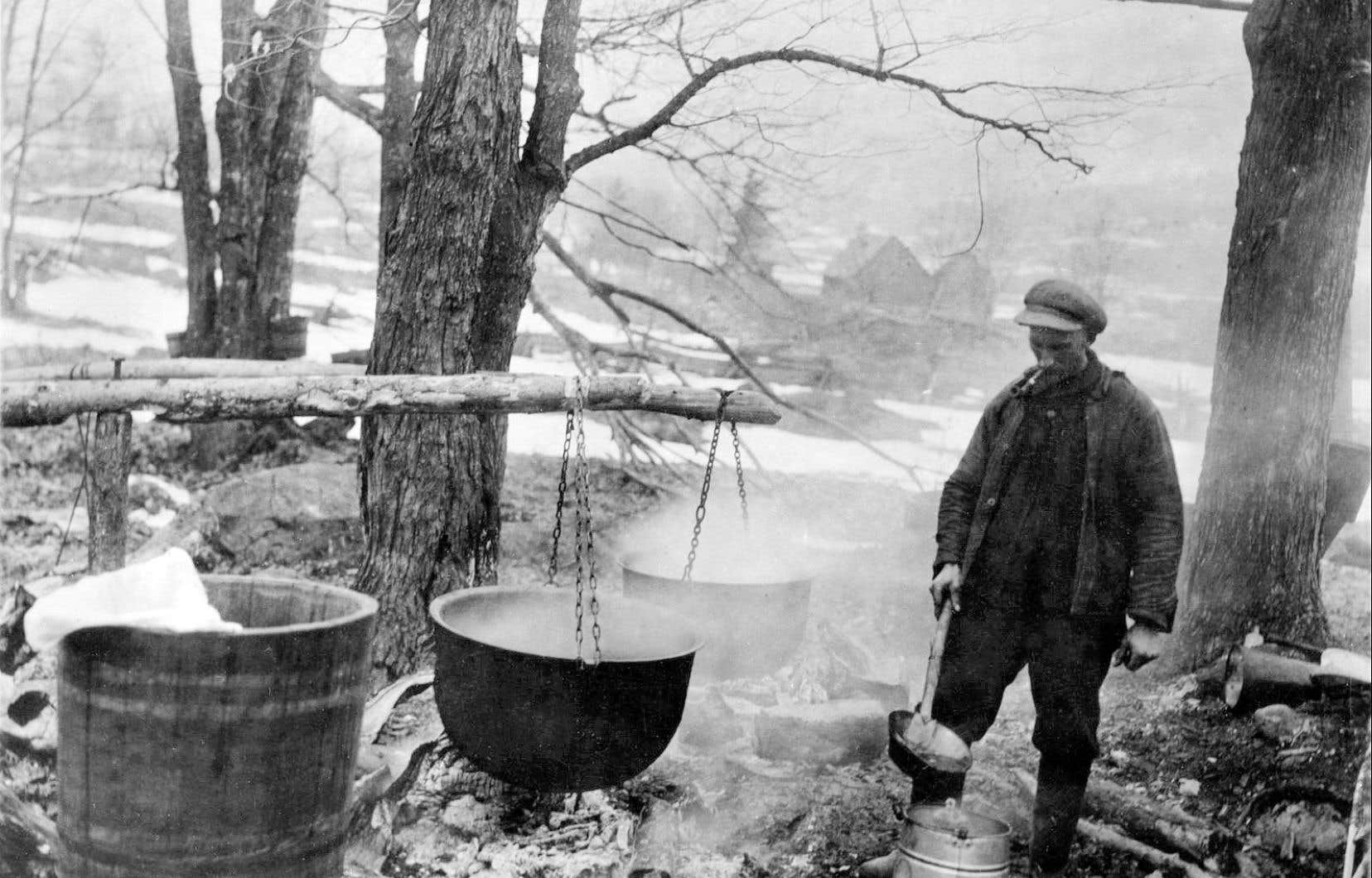While the winter border line appears less and less clear, will the sugar season soon be combined with that of the end-of-year celebrations? A producer from Estrie, Julien Dupasquier, has just tapped his 2,900 maple trees. He produced, in the middle of December, quality syrup thanks to the mild spells experienced before Christmas. This astonishing practice is now also seen in Vermont. Mr. Dupasquier, as reported by the specialized weekly Our Earth, has been cutting in this way for five years, well aware that climate change threatens many practices. Will the maples hold up?
Maple syrup production fell in 2023, due to a very shortened season last spring. Production for the year declined by more than 41%. This is in fact the least successful harvest since 2018. The collective reserve on which producers usually rely was, this fall, at its lowest historical level, even if no shortage is emerging.
There is growing evidence that maple syrup production times are likely to fluctuate like never before. Blond gold nonetheless remains one of the strong symbols of Quebec.
Jean-Roch Morin has just devoted a book to the history of sugars in the era of black and white photography. Already the author of another book entitled Blowtorches, patents and maple-making objects from yesteryear (La Plume d’oie, 2015), this time he brought together a quantity of old photos from across Quebec to support a story on the origins and importance of this activity entitled The sugar route.
The photographs collected in The sugar route have been gleaned from various public and private collections. Even if some are very beautiful, most of them are documents. They reflect, as a whole, the very strong impact of the sugar shack on collective Quebec life. There are also, in the pages of this book, some images captured in the United States, on the New England side, in other words at the gates of Quebec. They illustrate certain practices that also took place in Quebec, while recalling, indicates Jean-Roch Morin, that many seasonal workers crossed the border “to go and work in sugar shacks located among our neighbors to the South”, just like to many other tasks, it should be added.
Very small first cabins
At the heart of this book are the sugar shack and the maple syrup farmers, who are also occasionally women. Before the appearance of the typical cabins whose shape was frozen into a symbol represented on maple syrup cans, production was carried out entirely outdoors. In his makeshift installations, maple sap is boiled. Huge cast iron cauldrons receive the fruit from the cuts before the water is brought to the boil.
The cabin, at least as we recognize it in the popular imagination, took shape from the beginning of the 20th centurye century only. Before being made into planks, it is made of very round logs. The roofs, before being made of sheet metal, are covered with hand-cut tavaillons, mechanically mass-produced shingles or even joint covering boards, the same which make up the walls. They host ritual spring festivals. The family, even if distant, flocks there willingly. Among the games that have long been in vogue, that of smearing everyone’s heads with the soot produced under the evaporators.
The first Quebec sugar shacks were very small. They house an evaporator, this equipment which allows, through the action of heat, the sugar to condense. On the roof, the skylight allows steam to evaporate. Water carriers collect the precious liquid from the maple trees with which an entire society can afford sugar without having to buy sugar imported from the Antilles. Large barrels, mounted on sleds pulled by horses or oxen, are used to transport the sugar water to the cabin. How can we explain that even today, no sugar shack is classified by the State as a strong element of common heritage when the place of this tradition is so important in Quebec culture?
This book is intended to be a sort of introduction to maple history. It includes an interesting glossary where it is recalled that the boiler is the one who takes care of the evaporator; what’andouille is a small piece of wood or iron driven into the bark of a tree to watch the water flow from it; that the lined with sugar is a melting snow which increases the production of maple sap; that the rasps is a syrup filtration residue; or even that the ganoué is this sloping portion near the hut which allows the water to be hauled up to drain it.
Societal complexes, associated with the idea that maple syrup and sugar shacks are remnants of a past of poverty, have encouraged, at least for a certain time, many Quebecers to turn up their noses or to pay at best distracted attention to the history of sugars. It was in the not-so-distant days when molasses was considered more chic than maple products… Times have changed. Everyone now rightly recognizes that maple sugar constitutes one of the richest features in the history of Quebec society.
